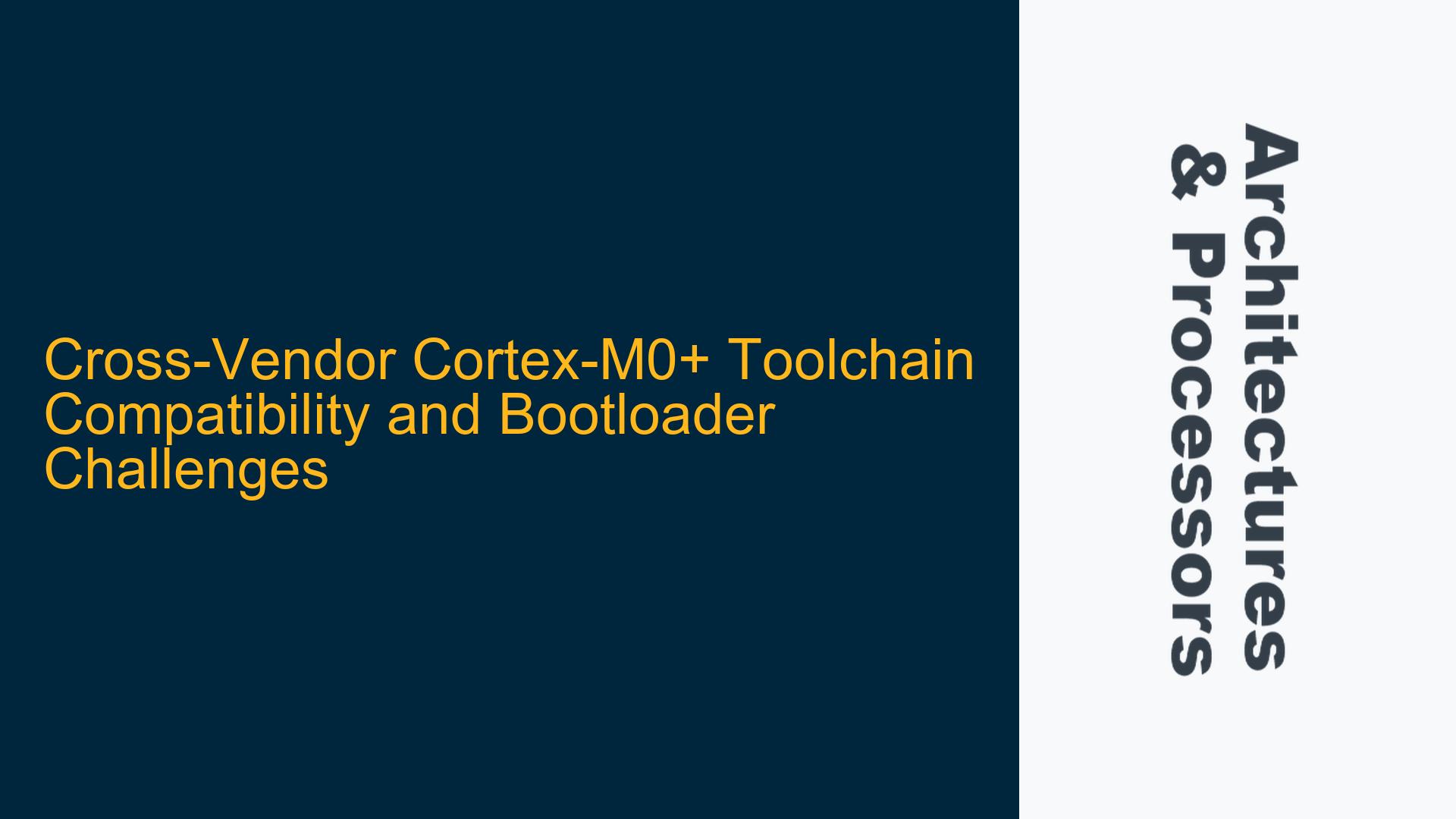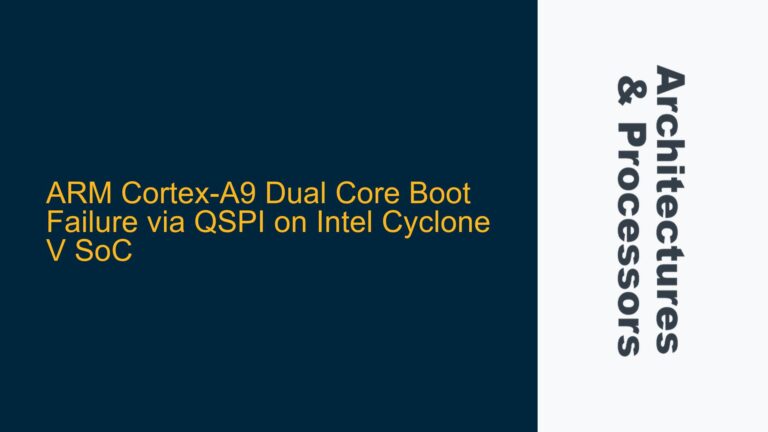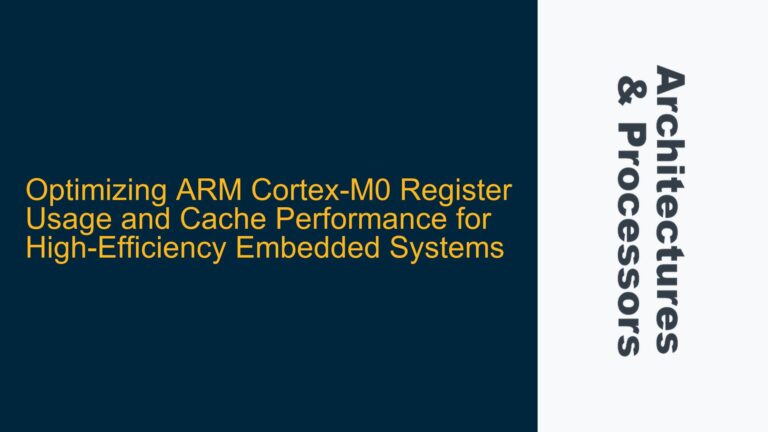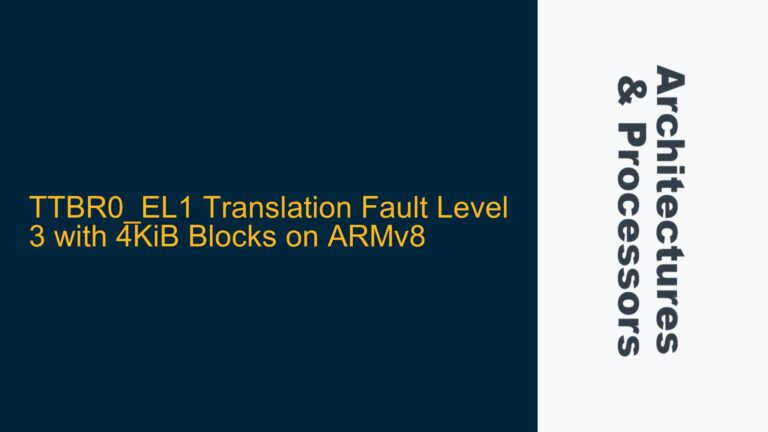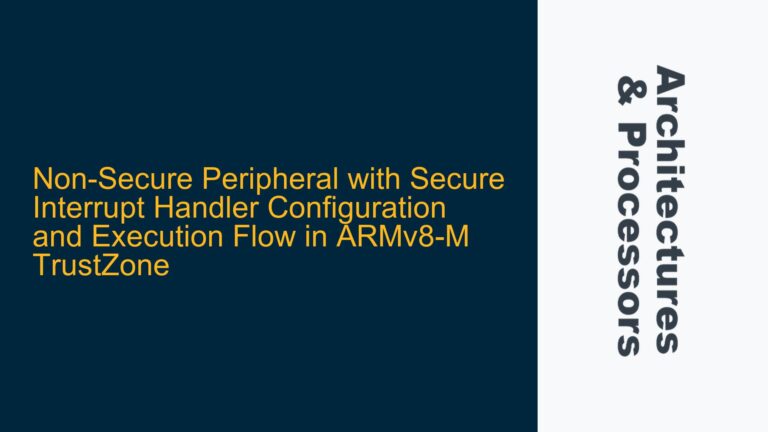ARM Cortex-M0+ Core Generality and Vendor-Specific Implementations
The ARM Cortex-M0+ is a widely adopted 32-bit RISC processor core designed for embedded applications requiring low power consumption and high efficiency. While the Cortex-M0+ core itself is standardized by ARM, its implementation across different vendors introduces variability due to optional features, proprietary peripherals, and vendor-specific tooling. This variability can impact toolchain compatibility, bootloader behavior, and overall workflow when transitioning between different Cortex-M0+ microcontrollers (MCUs) from various manufacturers.
At the core level, the Cortex-M0+ architecture is consistent across vendors, ensuring that basic instructions, memory models, and core functionalities remain uniform. However, vendors often integrate additional features such as custom memory maps, proprietary clock systems, and unique peripheral interfaces. These vendor-specific additions can complicate the reuse of toolchains and workflows developed for one vendor’s Cortex-M0+ MCU on another’s. For instance, while the ARM GCC cross-compiler can generate binaries for any Cortex-M0+ MCU, the initialization code, linker scripts, and startup files often require adjustments to accommodate differences in memory layouts and peripheral configurations.
The bootloader process is another area where vendor-specific implementations diverge. While the Cortex-M0+ core does not mandate a specific bootloader, most vendors provide their own bootloader solutions to facilitate firmware updates and debugging. These bootloaders are typically tailored to the vendor’s flash programming algorithms, clock configurations, and communication interfaces (e.g., UART, USB, or SWD). As a result, a command-line application designed to upload binaries to one vendor’s Cortex-M0+ MCU may not work seamlessly with another’s without modifications.
Optional Cortex-M0+ Features and Peripheral Configuration Challenges
One of the primary sources of variability in Cortex-M0+ implementations is the inclusion of optional features. ARM defines certain core functionalities as optional, allowing vendors to tailor their MCUs to specific use cases. For example, the Cortex-M0+ core supports optional features such as the Micro Trace Buffer (MTB) for instruction tracing, the Single Wire Output (SWO) for debug tracing, and the Memory Protection Unit (MPU) for enhanced security. The presence or absence of these features can affect both the development workflow and the runtime behavior of the firmware.
Clock configuration is another critical aspect that varies significantly between vendors. The Cortex-M0+ core relies on an external clock source, which is typically provided by a vendor-specific clock generation unit. This unit may include features such as phase-locked loops (PLLs), internal oscillators, and clock dividers, all of which require vendor-specific initialization code. Failure to properly configure the clock system can result in incorrect timing, peripheral malfunctions, or even a non-functional MCU.
Flash programming is similarly vendor-specific. While the Cortex-M0+ core provides a standardized interface for accessing flash memory, the actual programming algorithms and timing requirements are determined by the vendor. This means that a toolchain or bootloader designed for one vendor’s flash programming interface may not be compatible with another’s without significant modifications. Additionally, some vendors implement proprietary security features, such as flash read-out protection or secure boot, which further complicate the firmware update process.
Toolchain Adaptation and Bootloader Customization Strategies
To address the challenges of cross-vendor Cortex-M0+ development, developers must adopt a flexible and modular approach to toolchain configuration and bootloader integration. The first step is to ensure that the ARM GCC cross-compiler is configured to target the Cortex-M0+ architecture. This involves setting the appropriate compiler flags (e.g., -mcpu=cortex-m0plus) and linking against the correct runtime libraries. However, the compiler configuration alone is not sufficient; the linker script and startup files must also be customized to match the target MCU’s memory map and peripheral layout.
Linker scripts define the memory regions and section placements for the firmware. When transitioning between Cortex-M0+ MCUs from different vendors, the linker script must be updated to reflect the new MCU’s memory map. This includes specifying the correct flash and RAM sizes, as well as any vendor-specific memory regions (e.g., for peripheral registers or special-purpose RAM). Similarly, the startup file, which contains the initialization code for the MCU, must be modified to configure the vendor-specific clock system and peripherals.
Bootloader customization is equally important. While the Cortex-M0+ core does not prescribe a specific bootloader, most vendors provide reference implementations that can be adapted for custom use cases. When porting a bootloader from one vendor’s Cortex-M0+ MCU to another, developers must ensure that the bootloader’s flash programming algorithm, communication interface, and clock configuration are compatible with the new MCU. This may involve modifying the bootloader’s source code or integrating vendor-specific libraries.
For developers seeking a more standardized approach, the ARM CMSIS (Cortex Microcontroller Software Interface Standard) provides a set of abstractions for common Cortex-M0+ functionalities. CMSIS includes standardized startup files, peripheral access macros, and debug interfaces, which can simplify the process of porting firmware between different Cortex-M0+ MCUs. However, even with CMSIS, some vendor-specific customization is often necessary to account for differences in peripheral implementations and clock configurations.
In conclusion, while the ARM Cortex-M0+ core provides a high degree of generality, its implementation across different vendors introduces variability that can impact toolchain compatibility and bootloader behavior. By understanding the optional features, peripheral configurations, and vendor-specific tooling, developers can adopt strategies to adapt their workflows and ensure successful cross-vendor development. This requires careful attention to linker scripts, startup files, and bootloader customization, as well as leveraging standards like CMSIS to streamline the process. With these considerations in mind, developers can confidently navigate the complexities of Cortex-M0+ development across different vendors.
